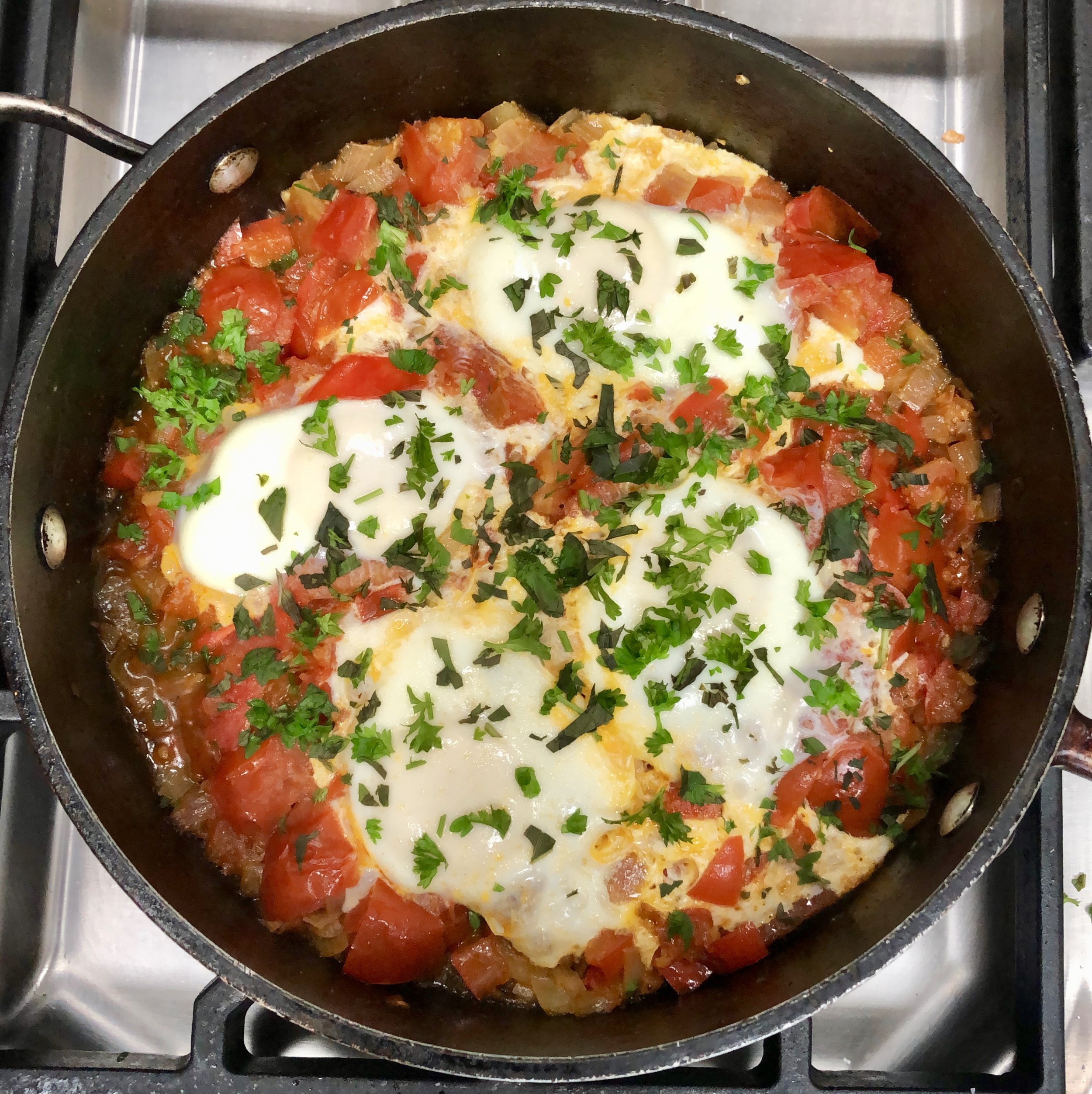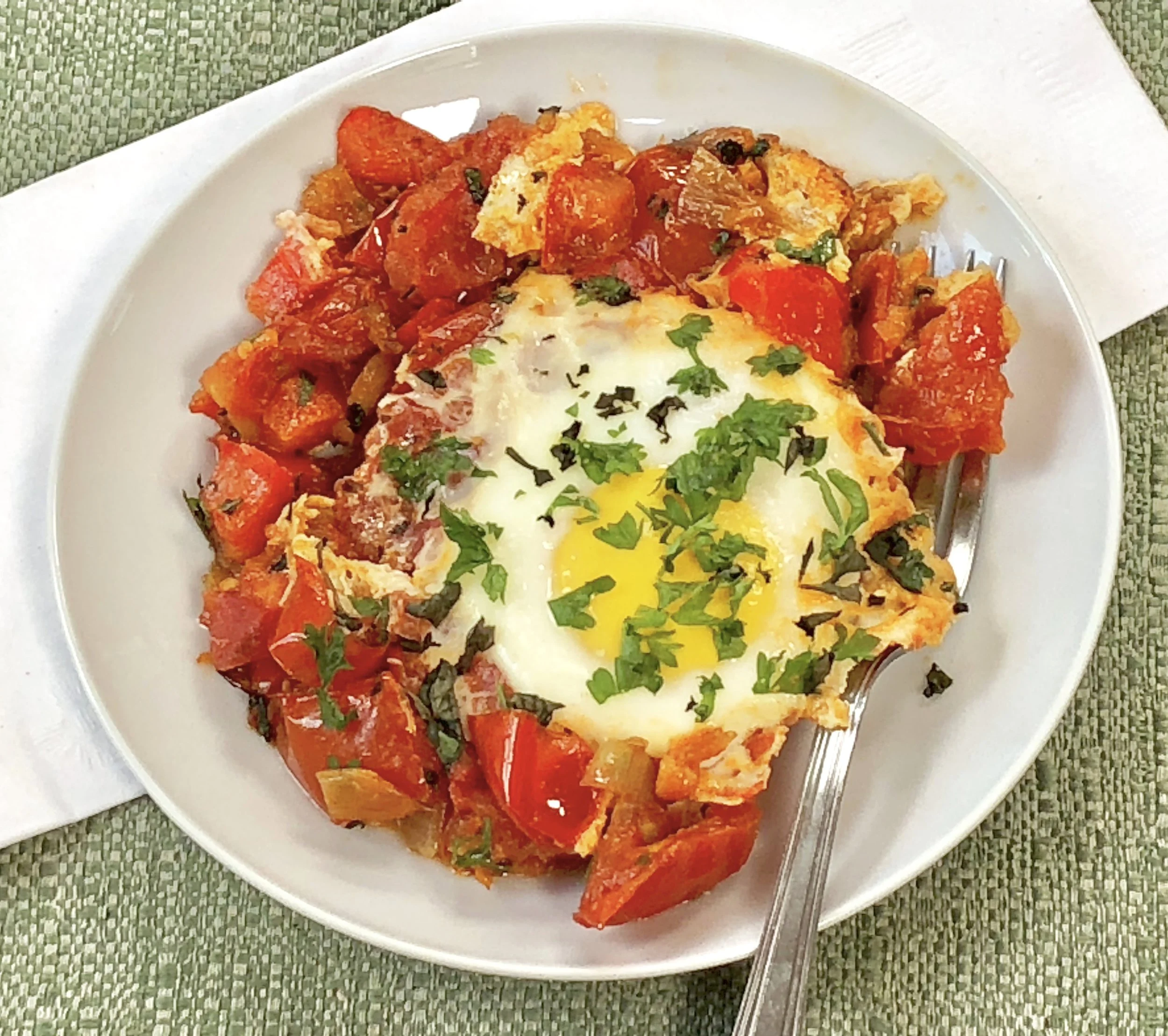We always have sleepover guests — my cousins — for New Year’s Eve. The next morning it’s always the same brunch: smoked fish, herrings, whitefish salad, bagels and coffee.
Perfect.
Except this year, for a variety of reasons, we have to consider less-salty meals.
I decided on a complete change. Something delicious, different and needs no extra salt because the seasonings are so bountiful and flavorful (the recipe says salt to taste, which can be zero).
I’ve made this for dinner and brunch. Works either way. Add a hunk of bread (naan if possible).
May become a new tradition.
Happy New Year 2020.
India-style Shakshuka
1/4 cup olive oil
1 medium onion, chopped
1 red bell pepper, deseeded and chopped
1 small habanero, serrano or other chili pepper, deseeded and chopped
1 large garlic clove, chopped
2 teaspoons chopped fresh ginger
8 plum tomatoes, coarsely chopped
2 teaspoons curry powder
Salt to taste
4-6 large eggs
2 tablespoons chopped fresh mint
1 tablespoon chopped fresh parsley
Heat the olive oil in a large sauté pan over medium heat. Add the onion, bell pepper and habanero peppers. Cook for 3-4 minutes or until softened slightly. Add the garlic and ginger and cook briefly. Add the tomatoes, curry powder and salt to taste. Stir, cover the pan, turn the heat to low and cook for about 10 minutes, stirring occasionally, or until vegetables are very soft and sauce-like. Crack the eggs into a small bowl one at a time then transfer each one next to the other over the vegetables. Cover the pan and cook for 4–5 minutes or until the eggs are set but yolks are still slightly runny. Sprinkle with mint and parsley. Serve each person an egg with some of the vegetables.
Makes 4-6 servings.



